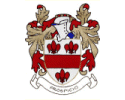Digital Archive from Trial Trench Evaluation Work at Lever Park Avenue, Horwich, Bolton, Greater Manchester, June 2022
Archaeological Research Services Ltd, 2022. https://doi.org/10.5284/1102085. How to cite using this DOI
Data copyright © Archaeological Research Services Ltd unless otherwise stated
This work is licensed under a Creative Commons Attribution 4.0 International License.
Primary contact
Archaeological Research Services Ltd
Angel House
Portland Square
Bakewell
DE45 1HB
UK
Tel: 01629 814540
Resource identifiers
- ADS Collection: 4926
- DOI:https://doi.org/10.5284/1102085
- How to cite using this DOI
Introduction
![South-West facing shot of land drain [1104] (1m scale)](images/LPA22_076.jpg)
This collection comprises images, site records and CAD from trial trench evaluation work at Land off Lever Park Avenue, Horwich, Bolton, Greater Manchester. This was undertaken by Archaeological Research Services Ltd in June 2022.
The evaluation comprised of 12 trenches, 50m by 1.8m wide each. Whilst there were no significant changes to how the trenches were excavated on the ground, trench 2 was cut short by approximately 8 metres at the north west end as it extended beyond the limit of the Proposed Development Area, it could not be compensated for on the south east end as it would have impeded trench 1.
Each trench was excavated in spits to the level of natural geology or archaeological remains, whichever was highest. The trenches were then fully planned, photographed and recorded on pro forma record sheets. No archaeological remains, deposits or features of any kind were encountered during the excavation of the twelve evaluation trenches. Although cartographic evidence had highlighted the possible presence of a long standing 16th century pond, a medieval plague pit and a 19th century horse race course, no remains were observed that could have been attributed to these features. Geophysical survey had also identified some anomalies across the site which the trenches had been targeting, these too however were not observed during the excavation of the trenches.
The presence of a number of stone capped and ceramic (horse shoe) land drains likely relate to the significant waterlogging and flooding of the Proposed Development Area in attempt to manage the excess water. Whilst a number of these appeared to feed towards the River Douglas some simply ran down the slope of the hill. A series of three stone capped land drains was the most extensive element of the water management system and seemed to represent a herring bone land drain construction. This however cannot be confidently ascertained as the limit of the trench edges obscured the point at which the land drains would have intersected.





